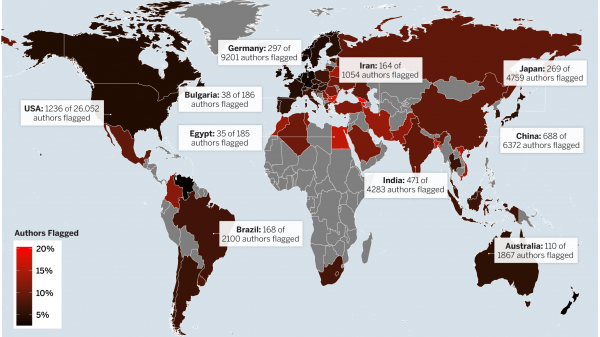Among the most popular ScienceInsiders of 2014, Plagiarism is first in the top ten.
Study of massive preprint archive hints at the geography of plagiarism
By
New analyses of the hundreds of thousands of technical manuscripts submitted to arXiv, the repository of digital preprint articles, are offering some intriguing insights into the consequences—and geography—of scientific plagiarism. It appears that copying text from other papers is more common in some nations than others, but the outcome is generally the same for authors who copy extensively: Their papers don’t get cited much.

The map above, prepared by ScienceInsider, takes a conservative approach. It shows only the incidence of flagged authors for the 57 nations with at least 100 submitted papers, to minimize distortion from small sample sizes. (In Ethiopia, for example, there are only three submitting authors and two of them have been flagged.)
Researchers from countries that submit the lion’s share of arXiv papers—the United States, Canada, and a small number of industrialized countries in Europe and Asia—tend to plagiarize less often than researchers elsewhere. For example, more than 20% (38 of 186) of authors who submitted papers from Bulgaria were flagged, more than eight times the proportion from New Zealand (five of 207). In Japan, about 6% (269 of 4759) of submitting authors were flagged, compared with over 15% (164 out of 1054) from Iran.
Such disparities may be due in part to different academic cultures, Ginsparg and Citron say in their PNAS study. They chalk up scientific plagiarism to «differences in academic infrastructure and mentoring, or incentives that emphasize quantity of publication over quality.»

